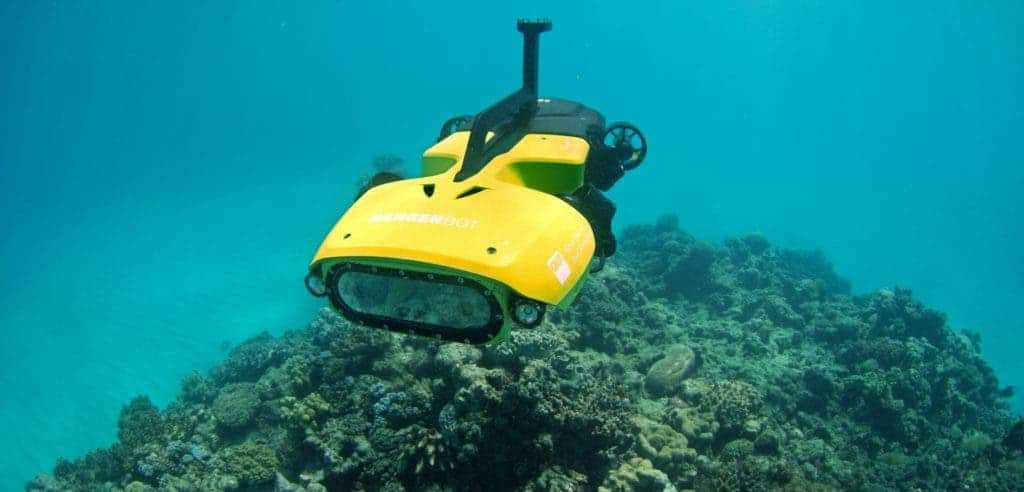A syringe-wielding, toxin-injecting bot will defend the Great Barrier Reef against invading starfish.

Image via Youtube.
It’s definitely a bad time to be a coral. Climate change is stressing the life out of these tiny creatures (literally), causing more and more frequent bleaching events. While this is likely enough to turn most reefs into dry husks on its own, corals also have to contend with overfishing and pollution, which has sped up their decline.
And it seems that the stars are also conspiring against the Great Barrier Reef — or, more specifically, the crown-of-thorns starfish.
Unleash the robots!
Crown-of-thorns starfish (Acanthaster planci) feed on coral, which isn’t generally a problem. If left to themselves, they keep the coral population in check, but not in sufficient numbers to damage the reef. However, there are clues that human activity (most notably agricultural runoff and port activity) has driven up their numbers to such an extent that in 2012 they were responsible for 42% of the total losses of coral, reported Terry Huges for The Conversation.
In a bid to protect the reef against this ravenous tide, Australia plans to unleash teams of killer bots on the starfish.
The idea first took root in 2015, when researchers at the Queensland University of Technology (QUT) showcased the Crown-of-thorns Starfish robot (COTSbot). The bot was capable of autonomously seeking out its targets — with 99% accuracy — and delivering a chemical cocktail to finish them off.
The same team has further refined their idea, resulting in the RangerBot. The new drone (sporting the same yellow garb) can kill starfish just as easily as its predecessor. In addition, RangerBot brings several new tools to bear — it can monitor the reef’s health indicators, map underwater areas, and it comes with an extended battery allowing it to function for eight hours straight — about three times as long as a human diver. RangerBot’s advanced design, low cost, and autonomous capability won it the 2016 Google Impact Challenge People’s Choice prize.
RangerBot can work much cheaper and more efficient than human divers for the task and can operate at any time, be it night or day. It’s the world’s first underwater robotic system designed specifically for coral reef environments using that uses only robot-vision for real-time navigation, obstacle avoidance, and complex science missions.
It is operated using a smart tablet. The researchers also made a concentrated effort to keep the bot as simple to use as possible:
“Weighing just 15kg and measuring 75cm, it takes just 15 minutes to learn how to operate RangerBot using a smart tablet,” said Professor Matthew Dunbabin, who lead the team that designed RangerBot.
“We also spent a lot of time getting the user interface as simple to use as possible so that as many of our stakeholders (from researchers, management authorities and school children) could potentially operate it with a small amount of training.”
While virtually all reefs are struggling, the Great Barrier Reef — being a designated World Heritage Site — enjoys a lion’s share of the efforts and technology dedicated to coral protection and rehabilitation. Drones, cameras, artificial reefs, and computer simulations have all been brought to bear to prevent the reef from undergoing irreversible damage.
Hopefully, these efforts will be successful and other coral reefs around the world will benefit from the lessons learned here.
“Environmental robotics is a real passion of ours and we see so much potential for these advanced technologies to transform the way we protect the world’s coral reefs,” Dunbabin concludes.


